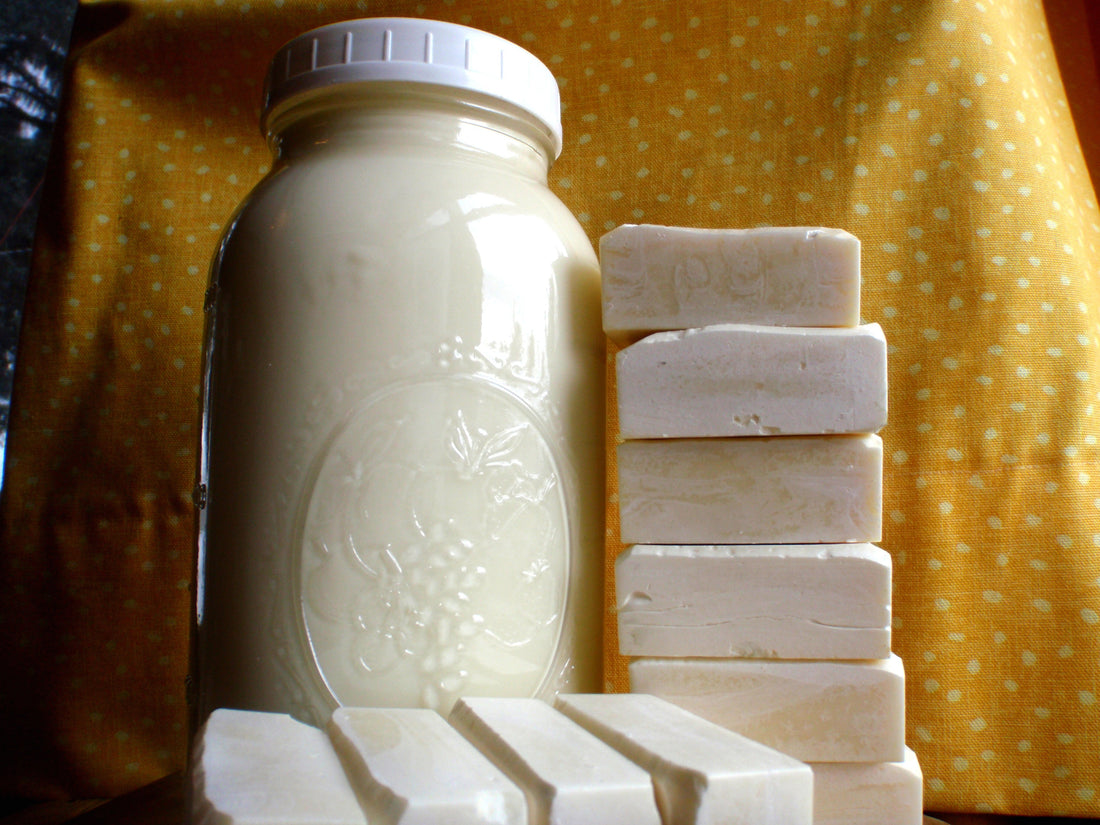
Making Milk Soap
Share
I am sometimes asked if I make goat milk soap and the answer is no, in fact I make cow milk soap! I'm not quite sure when and why goat milk became the "go-to milk" for soap making but you can make soap with any kind of milk (or any kind of water based liquid really!) The only soap I currently make with milk is my Milk and Maple Soap.

Both cow and goat milk contain fats, vitamins and minerals that are great for the skin and that make a bar of soap more moisturizing. The cow milk I use is from Jersey cows, which means it is higher in fat and thus more moisturizing than store bought whole milk. The farm I buy from is certified organic and only a few miles down the road.

Some folks also ask if the milk is raw. And well, yes, it's raw when I put it into the soap batter but after going through the heat and chemical changes required to make soap, I don't think there are any probiotics or enzymes left! There are still plenty of great nutrients and fats in there for your skin, though.
When making soap with milk, its very important to keep the process much colder than usual to avoid burning the milk. Soap recipes that include sugars (including lactose, a naturally occurring sugar in milk) create more heat than other soaps, which is why I add the milk to the recipe in the form of ice cubes. (The purpose of sugars like maple syrup is to make the soap a little sudsier.)

If the milk weren't frozen to start, the heat of the chemical reaction would cause the milk proteins to curdle, burn and turn brown or even black. Even with the frozen milk cubes, the soap batter will heat up quite a bit during mixing but the goal is not to let anything get burnt.
So milk soap takes a little extra care and effort to make but the creamy, moisturizing bars that result are certainly worth it!
